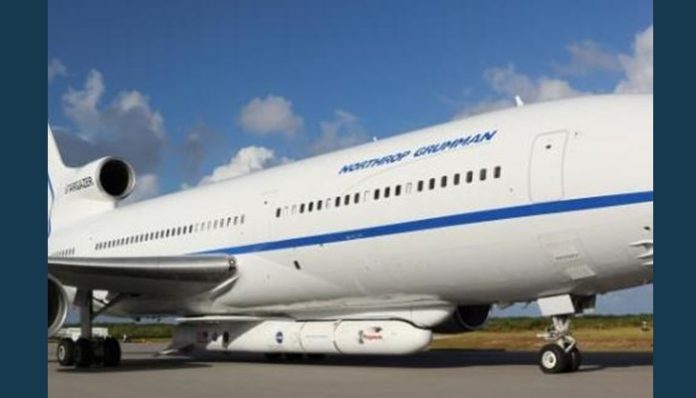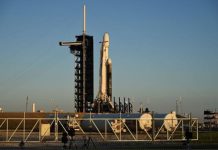
ORLANDO, Fla., Oct. 11 (UPI) — After a two-year delay, NASA launched new space weather technology from Florida on Thursday night — the Ionospheric Connection Explorer or ICON satellite.
ICON is designed to help NASA understand and predict how solar flares interact with the earth’s atmosphere and magnetic field, including our planet’s deadly Van Allen radiation belts. The data is expected to help satellites avoid radiation, among other things.
A jet carrying the satellite took off at 8:32 p.m. on Thursday. The rocket launched at about 10 p.m. at 39,000 feet. It was to fly for about 10 minutes before releasing its payload.
“This satellite will help us get exactly the right physics, and you will now have a much more accurate prediction about what that solar flare is going to do,” said Nicola Fox, heliophysics division director for NASA.
The plane was a Northrop Grumman L-1011 Stargazer aircraft that took off from Cape Canaveral Air Force Station. It dropped a 52,000-pound Pegasus XL rocket and payload about 100 miles east of Daytona Beach, which ignited and carried the satellite into orbit.
Previous attempts in 2017 and 2018 were delayed due to faulty sensors and vibrations detected from the rocket as it was carried by the jet, Northrop Grumman officials said. Those issues were corrected after lengthy, difficult testing during which engineers had to mimic the conditions of the rocket’s high-altitude journey.
Despite the delays, the mission is coming in at its original budget of $252 million, NASA officials said.
Dropping the rocket is “the most exciting part of the flight,” said Phil Joyce, vice president of space launch programs at the company. A copilot on board actually pushes a switch to drop the Pegasus, if weather and all other conditions are good.
“It’s dropping 52,000 pounds, but the plane still has the same lift,” he said. “…so the plane climbs fairly rapidly about 1,200 to 1,500 feet as the rocket’s falling.”
NASA believes the ionosphere, where the Sun ionizes the air to create charged particles, is significantly influenced by storms in Earth’s lower atmosphere. ICON also will help NASA understand how atmospheric winds control ionospheric variability.
Northrop Grumman began air-launching Pegasus rockets in 1990, when one launched from beneath a NASA B-52 aircraft. The Pegasus has launched 90 satellites on 43 previous missions, according to Northrop.
Pegasus launches have been conducted from six separate sites in the United States, Europe and the Marshall Islands.





